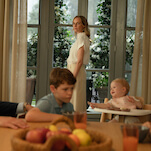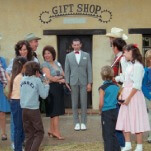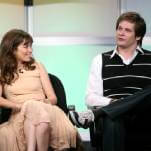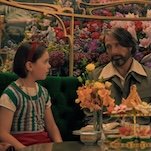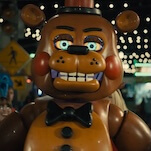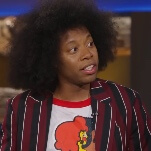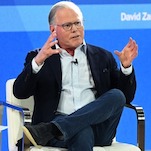The Honeymooners, “Better Living Through Television”

In 1922, over the objections of congressmen and cultural commentators, AT&T announced that its network of radio stations would be adding commercials to their broadcasts, effectively ending the era when radio was the province of hobbyists and amateur showmen. Twenty-eight years later, Hazel Bishop’s $50,000-a-year cosmetics company proved the effectiveness of advertising when it placed ads in the few markets that had television, and within two years saw business expand nearly 9,000 percent. And in 1955, a bloviating Brooklyn bus driver named Ralph Kramden bought 2,000 all-in-one kitchen gadgets for $200, and booked time on TV to sell them. Ralph, though, was fictional. And a failure.
The story of television—like the story of radio before it—is the story of access. There are only so many hours in a day, and only so much room on the spectrum. (Or at least that’s how it used to be.) Much of the development of radio and TV programming happened in concert with a constant give-and-take between the government and media conglomerates. The former (via RCA) advanced radio technology during World War I, and later procured strips of land for cables and transmitters. The latter funded early radio experiments and owned the bulk of the equipment. Each has a claim to broadcasting sovereignty, and even now, the two sides squabble over content: What’s too vulgar too air? What’s too misleading? And most importantly: Who gets to step in front of a microphone and/or a TV camera and talk to the nation?
Of course, I wasn’t thinking about any of that when I started watching The Honeymooners as a teenager. I didn’t know that Jackie Gleason had been performing Honeymooners sketches on his live variety shows since 1951, or that the only reason I even got to see “The Classic 39” episodes from the 1955-56 season on my local UHF channel was because Gleason had the foresight to shoot them on film. (Still, they were performed live, with no retakes and practically no rehearsal.) I didn’t know that so many TV shows back then were set in New York because New York had been the base of operations for the major radio networks, and thus one of the few cities to have access to television when the Korean War prompted a temporary freeze on granting new broadcasting licenses. And I certainly had no idea of the connection between The Honeymooners and the great body of live television produced in New York around the same time, a lot of which engaged social problems and the plight of the working poor. As a sketch, “The Honeymooners” predates Marty, the 1953 telecast that redefined the medium’s artistic potential. But certainly Marty’s success gave Gleason license to amp up the misery in 1955.
No, I just knew I liked The Honeymooners because it didn’t look or feel like Leave It To Beaver, The Brady Bunch, or the other sunny sitcoms I’d been exposed to throughout my youth. By the time The Honeymooners became its own entity, Gleason and his stock company had the characters down: the irascible, luckless working man Ralph trying to get ahead with the help of his pretty, patient wife Alice (Audrey Meadows) and his sewer-worker best friend Ed Norton (Art Carney). Unlike the usual ’50s sitcom landscape defined by middle-class confidence, The Honeymooners peddled comic despair. Most of the stories have to do with Ralph chasing opportunities to make money, and blowing it because of his own gruff personality. The show often ends with Ralph and Alice in each other’s arms, but in a gray, unadorned apartment that looks like the place where dreams go to die.
In the episode “Better Living Through Television,” Ralph learns that there’s a box of “Handy Housewife Helpers”—a device that opens cans, takes corks out of bottles, cores apples, scales fish, drives screws, cuts glass, sharpens scissors, and takes corns off feet—just gathering dust in a friend’s warehouse. All he and Norton need to do is borrow the money from their wives to buy the box, pay for a TV commercial, then sit back and watch those Hazel Bishop dollars come flooding in.
The first half of “Better Living Through Television” tracks Ralph and Ed’s efforts to get the money, and relies on some Honeymooners standbys. There are jokes about Ralph’s weight. (When Ralph warns Alice that he could always leave her and that she “can’t place your arms around a memory,” she stares at his belly and snaps, “I can’t even put my arms around you.”) There are jokes about Ralph’s haplessness. (Both Norton and Alice quip that to find someone dumb enough to buy this gadget, all Ralph has to do is to knock on his own door.) And there are jokes about who’s really in charge of these households. Ralph makes a big show in front of Norton about being “the king of my castle,” which inevitably sets up a scene where Norton urges Ralph to tell Alice what’s what and who’s who, while Alice fixes Ralph with a withering glare. Even the first scene of the episode plays with gender roles, as Norton walks onstage wearing a dress.
Now… is any of this funny? One of the common arguments about The Honeymooners has to do with whether the show holds up as a comedy, and not just as a cultural/historical document. Veteran TV writer Ken Levine even posted what he calls his “Comedy Test,” in which he asks whether watching Art Carney say hello to a golf ball is as amusing now as it was 50 years ago. I think it is, for reasons related to a theory of comedy that I’m going to save for some future installment of this project. As for “Better Living Through Television” specifically, I confess that I don’t find the first half of the episode all that funny. I do chuckle at Carney’s line-readings when Norton is stuck in a dress—I like his “I got an allergy to crinoline,” and the way he insists on smoking his cigar because “It’s the only link left with the old me!”—but when Ralph’s trying to pitch his plan first to Norton and then to Alice, most of the gags fall flat, and even the audience reaction is muted, making the moments all the more awkward.
But then that’s part of the appeal of The Honeymooners, too: that palpable feeling that the performers are barely in control. They rarely seem to worry about nailing a line exactly. (At one point in this episode, Gleason even refers to Ralph’s “Handy Housewife Helper” as the “Helpful Housewife Happy Handy.”) Yet when they hit on something that the live audience finds funny, they know how to mine that vein. Gleason in particular would milk laughs with a slow burn, followed by an extended, room-filling explosion. Those moments don't feel micro-managed; they feel like something that slipped through the filters.
In fact, the second half of “Better Living Through Television” is genuinely hysterical to me—even after seeing it at least 20 times—because it follows the rules of classic farce. After Alice refuses to give Ralph the money he needs, he borrows it elsewhere and sweats over the content of his ad with Norton. We get to see almost one full run-through:


























